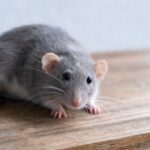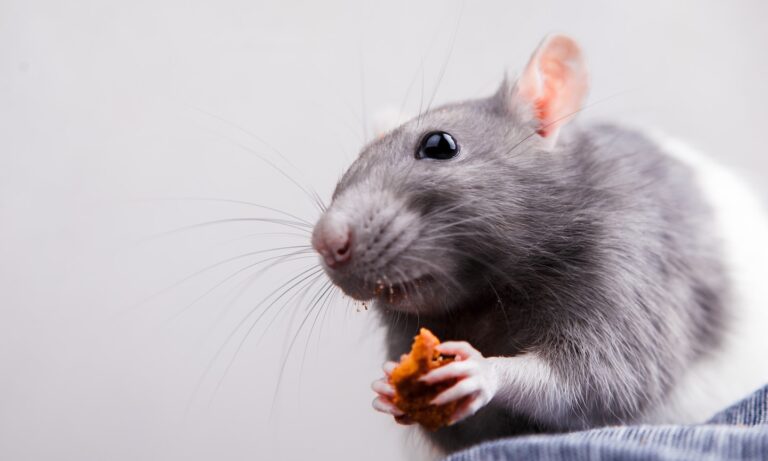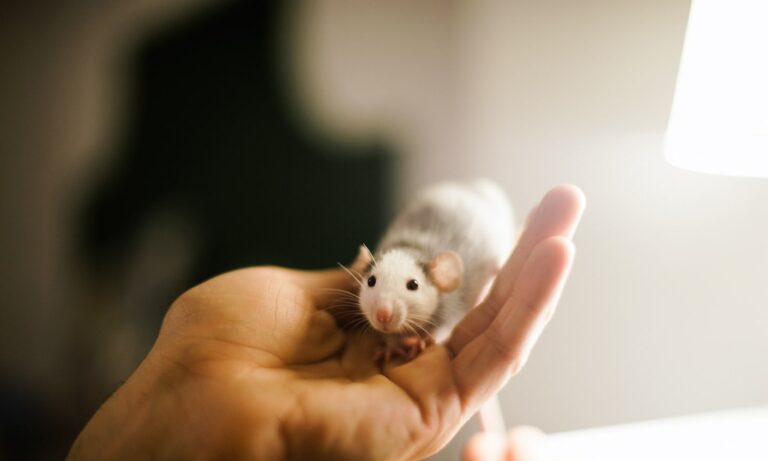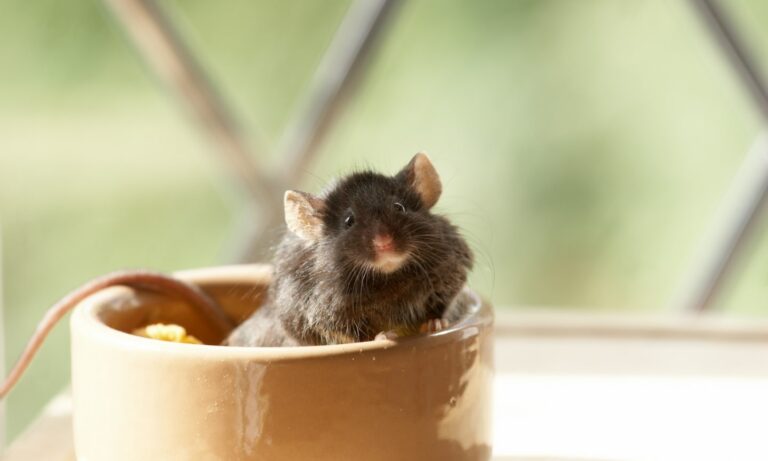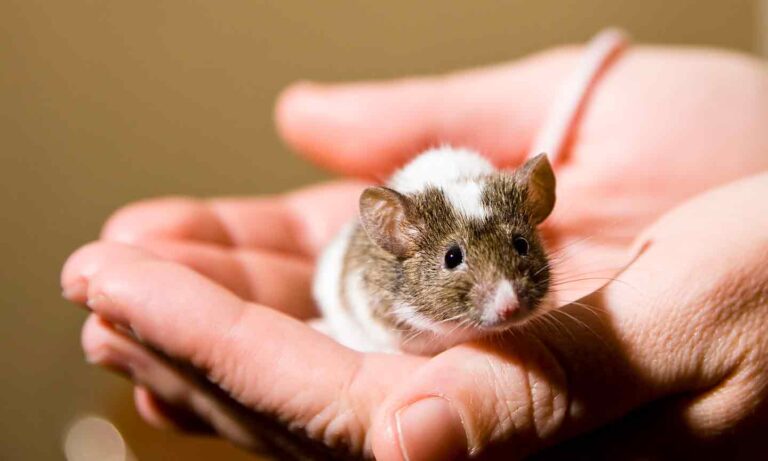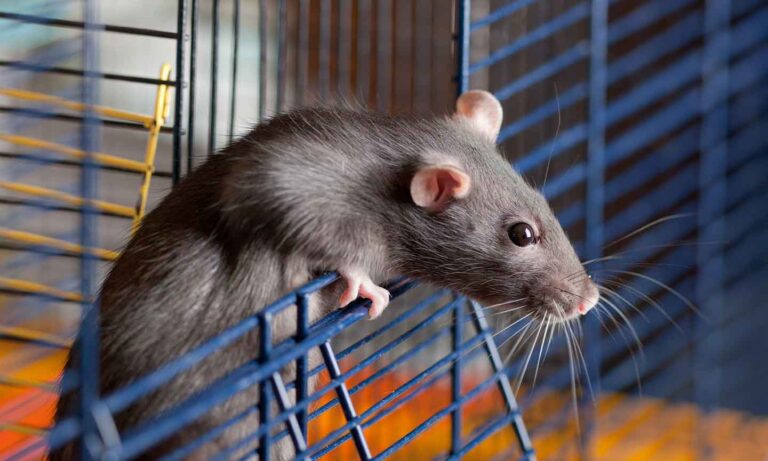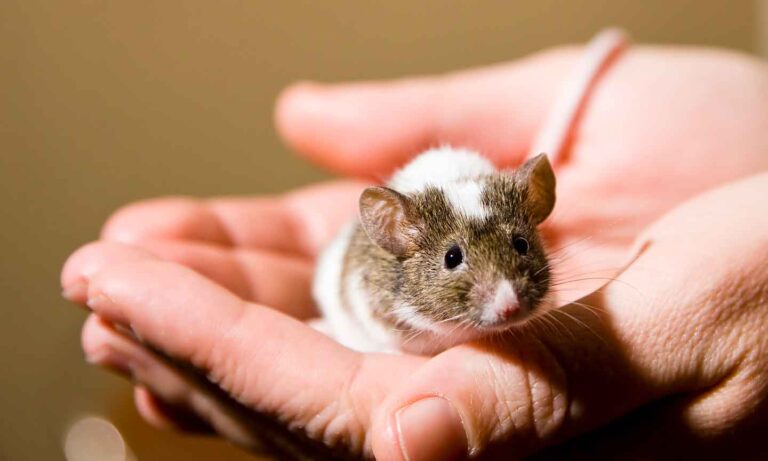One Mouse Health Problem You Can’t Ignore
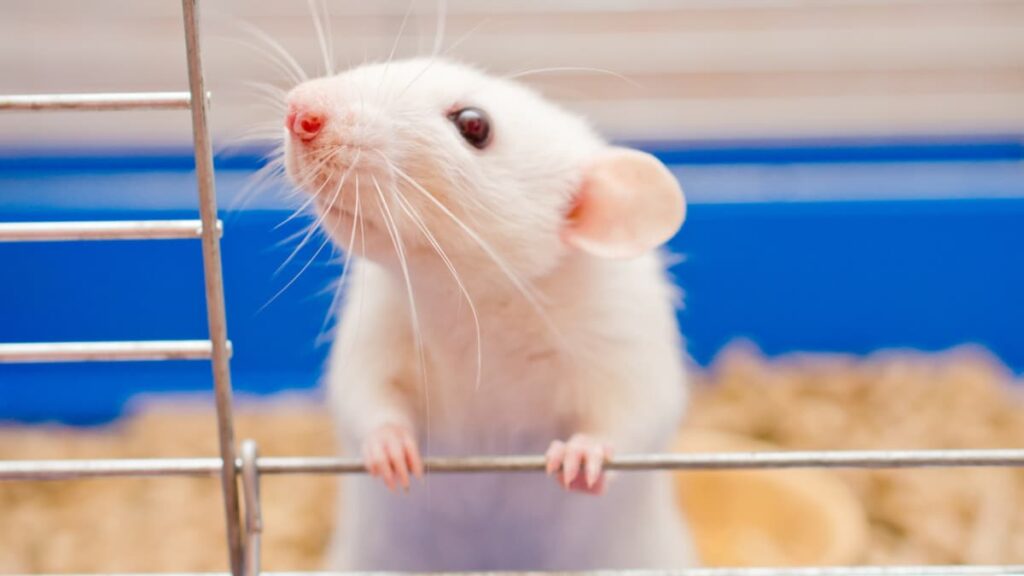
Photo by Kirill Kurashov/Shutterstock.com
Mice are one of the common small rodents that make good pets.
In general, mice do not bite and are fairly disease-resistant. They are also small enough that their enclosure fits in most homes or apartments.
They are omnivores that eat mostly grass, seeds, grain, berries and insects. Their dietary requirements are well known from laboratory studies, and several different pet food companies make good rodent pellets and treats for mice.
Pet mice are prone to two common diseases: skin problems and mammary cancer.
Fighting The Mite
Skin disease is the most common problem seen with pet mice. Many different things can cause skin disease in pet mice. Fur mites are common in mice, and three different mites can infect mice: Myobia musculi, Myocoptes musculinus and Radfordia affinis; M. musculi is the most common type.
Mice typically get infested with mites from contact with other infested mice or from infested bedding or wood chips. This is especially common in pet stores. Infested mice have a thin hair coat mostly on the head and back, an oily appearance, itchy skin and skin damage from excessive scratching.
Fur mites can be diagnosed when your veterinarian does a skin scraping and looks for mites under a microscope. Sometimes the mites can be seen on the hair and skin with a magnifying lens. Fur mites can be treated with ivermectin either by injection, orally or topically. Selamectin and moxidectin can also be used topically to treat the mites.
The Nonworm Ringworm
In addition to mites, pet mice are also at risk for ringworm infections.
Ringworm is caused by the fungus Trichophyton mentagrophytes. Ringworm in mice is not as itchy as it is in other species, so mice do not scratch much when infected with ringworm.
Skin lesions are areas of hair loss with a pink to red color and a crusty appearance. Ringworm lesions do not always glow under an ultraviolet light (Wood’s light test), so a fungal culture of the hair is often needed to make the diagnosis.
It is important to look for ringworm infections, because it can be spread from mice to people.
Traumatic Events
Mice kept in large groups are prone to some stress, barbering and fighting.
The dominant male of the group will chew off the whiskers and hair on the nose and around the eyes of the other mice. This can also happen in groups of female only mice, with the dominant female doing the chewing. The dominant mouse will not have any hair loss.
Male mice are also prone to fighting each other. Fights can result in bite wounds on the shoulders, rump and tail, and to secondary bacterial infections of the bite wounds.
These behavior-related skin problems are hard to correct, and it may be necessary to isolate individuals to prevent barbering and fighting.
Genetic Troubles
Some strains of black mice (known as C57BL/6) are prone to severe skin problems that are not related to mites, allergies, ringworm or behavioral issues.
These black mice can have severe itchy skin, self-mutilation from excessive scratching, and ulcerative skin lesions. Some of these lesions can be large and become infected with Staph bacterium.
These mice often have an immune-mediated disease causing damage to the blood vessels in the skin. Skin biopsies are usually needed to diagnose these skin cases.
This condition can often be controlled with omega-3 fatty acid supplements (fish oil). More severe cases may require immune modulation with topical cortisone or cyclosporine.
Some mice can develop an immune-mediated destruction of the ear flaps. The damage is to the blood vessels in the ear flaps and can be itchy and lead to self-mutilation and loss of the ear flap. These mice can be treated with topical cyclosporine or cortisone along with omega-3 oils to control the immune-mediated damage to the blood vessels in the ear flaps.
Tumors
In addition to skin diseases, mice are prone to skin tumors. Most of these are actually mammary tumors and are usually malignant. Some of these are rather large and infected, which makes surgically removing them very difficult. Unfortunately most of these malignant tumors will reoccur after the surgery and eventually become fatal. Chemotherapy and radiation therapy is usually not attempted in mice.



